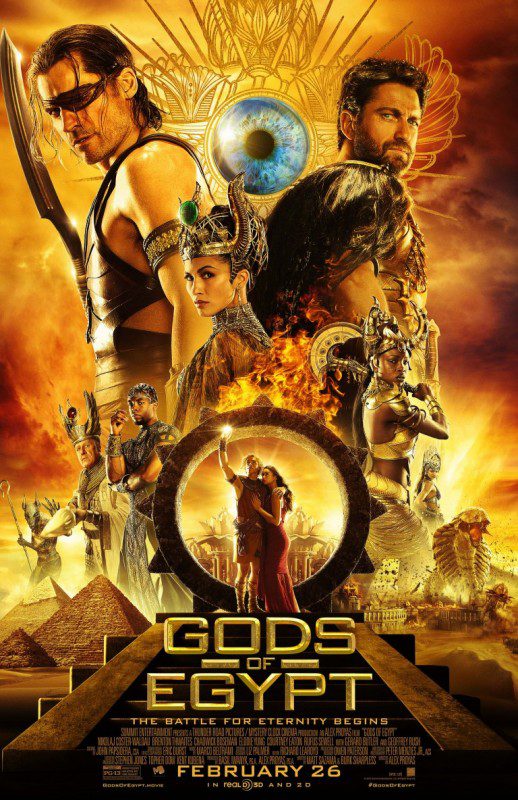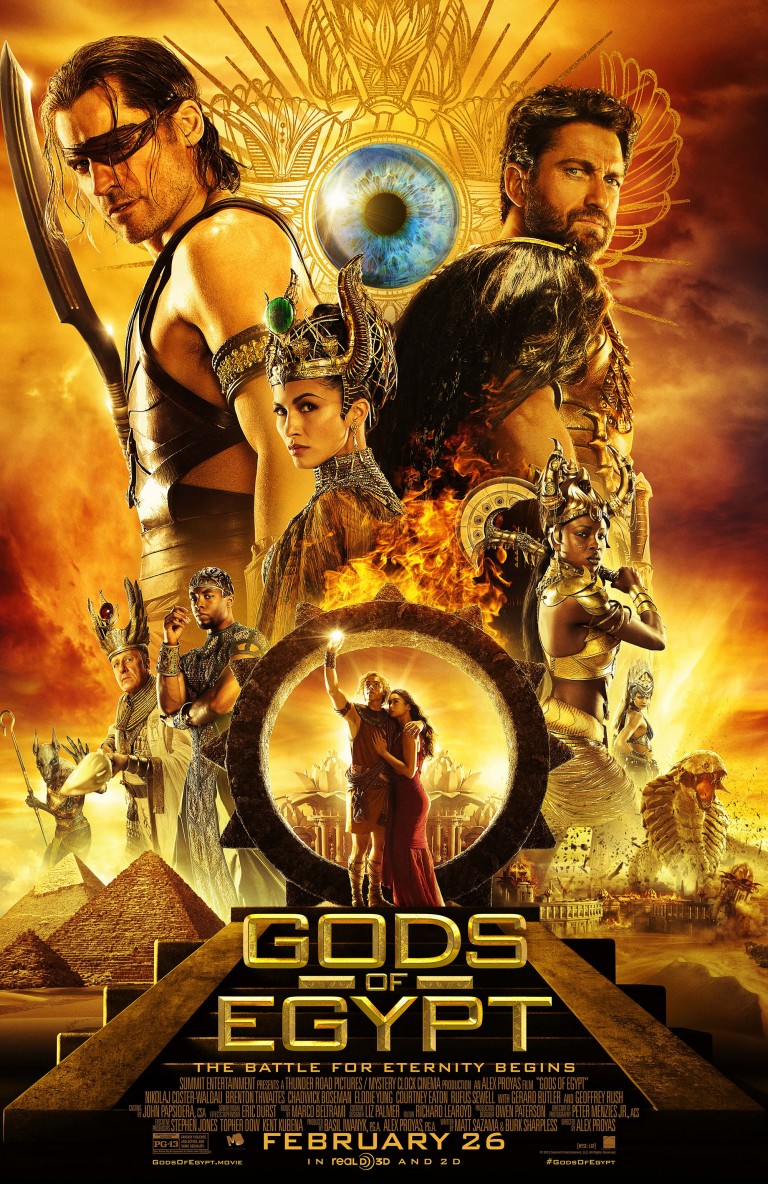BY AHD KOTB and RINADE AMER
@AHDKOTB and @RINADE_AMER
It seems as though Egyptian-born Australian director Alexander Proyas based the majority of his film’s focus on creating a $140 million video game-like movie, The Gods of Egypt, while tossing Egyptian mythology out the pyramid.
The gods of Egypt are imprecisely shown as immortal creatures, they bleed gold when hurt and if killed, they can be revived; they are shown as being almost four-feet taller than mortal humans and have the ability to turn into beast-like creatures.

As the movie opens, the camera glides over the fictional areas of ancient Egypt before landing into an overcrowded street where Bek and girlfriend Zaya are seen rushing to the amphitheater to watch the ceremony of King Osiris stepping down to crown his son Horus the god of Egypt.
Instants before Horus is crowned; Osiris’s shameful brother Set, the God of darkness, interrupts the ceremony, kills his brother, rips Horus’ eyes out like Lego pieces and claims Egypt for himself.
Days get coarse for mortal Egyptians as Set leads Egypt into total chaos.
Powerless, Horus hides away. However when Zaya, who believes in the virtuous gods ends up dead, Bek decides to joins Horus on a mission to help restore Egypt from Set and bring back her back to life.
Their journey to reclaim Egypt is rough, as they travel around deserts, visit the dead and orbit outer space to seek assistance from Horus’ grandfather Ra, the sun god, where he resides on a floating ship and battles a cosmic worm.
The movie ends on a clamorous note, where of course the good guys win.
Nonetheless, the problem we had is not with the film’s second-rate sci-fi/fantasy story line, but with everything else.
Egyptians are recognized as individuals of color, yet the movie portrays them as all-white, Caucasian descendants, with the exception of a few.
Maybe #Oscarssowhite is accurate after all. The movie is filmed in Australia, 7,730 miles away from Egypt.
It is uncommon to see a studio apologizing for the lack of diversity among its cast members – before the movie release. Lionsgate along with Proyas, issued an official statement November 2015 in which the movie was referred to as a “whitewashing controversy” and they apologized for the ‘lack of diversity’.
“We failed to live up to our own standards of sensitivity and diversity, for which we sincerely apologize,” Lionsgate officials said in their statement.
Where were you when the actors were being cast? Cast members should reflect the diverse scope of the Egyptian population at the time.
Although they failed to do so, at least they owned up to it.
Surely, Proyas chose talented Hollywood actors with a mix of British, Scottish and American accents. Yet, it is evident that none resemble an Egyptian, North African, or Middle Eastern-looking character.
Although we should give some credit to Gerard Butler who plays Set, it looks like he attempted to achieve the look by spending a good amount of time at a tanning salon.
The movie currently sits at just 13 percent of positive ratings on Rotten Tomatoes.
It looks like Proyas has gotten both the Egyptian and Greek mythologies mixed.
The costumes worn by the gods look like hand-me-downs from previous Greek movies. The movie is evidently made to impress and appeal to Western audiences. Apart from that historical tragedy, the filmmakers succeeded in making impressive visuals.
However, the excessive use of the costly CGI effects made it seem as though they had nothing else to offer, except for some lame slow-motion action scenes that lack all the thrill, such as Horus’ battle with the enormous snake.
The worn out green-screen would not have been that irritating if they had just filmed on location in Egypt’s sandy vastness.
Honestly, we would only recommend this movie to a group of 15-year-olds who still have an overexcited imagination.
Giant snakes that breathe fire, massive talking sphinxes and a heap of CGI will definitely do the trick for them.
For older audiences, not so much.
Anyway, lets hope there won’t be a sequel.
The Caravan Review: Three out of five Camels.
